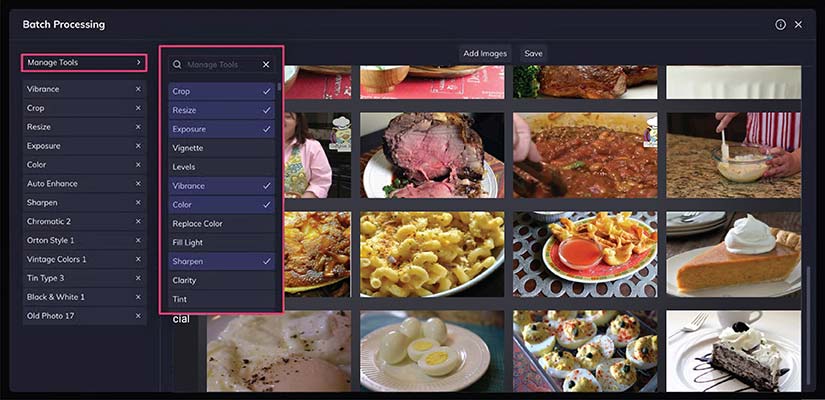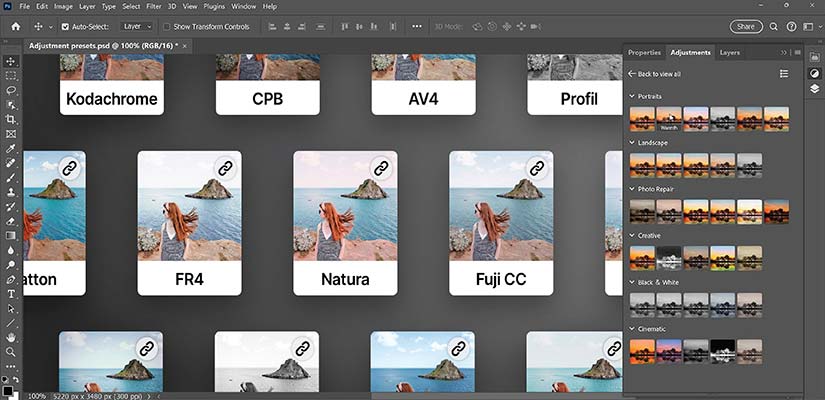- Process automation accelerates workflows, enabling businesses to handle high-volume editing tasks and seasonal surges with ease.
- Automation ensures uniform edits across images, leveraging machine learning models for precise adjustments and professional standards.
- By reducing manual intervention, automation lowers operational costs and allows businesses to focus on strategic activities while meeting tight deadlines.
Table of Contents
E-commerce photo editing services are evolving to meet the growing demand for high-quality visuals that enhance customer engagement and boost conversions. With thousands of product images requiring consistent edits, manual processes can no longer keep pace with the needs of the e-commerce industry.
To address these challenges, process automation has emerged as a critical solution. By leveraging advanced tools like batch processing for photo editing and automated product photo editing, businesses can streamline workflows, improve efficiency, and maintain consistent quality. Automation is now an essential strategy for e-commerce businesses to stay competitive in photo editing.
This blog explores the benefits of process automation in photo editing, actionable strategies for automated photo editing, and how automation transforms workflows to meet the demands of modern e-commerce.
10 Photo editing challenges for e-commerce businesses
The quality of product images significantly influences customer decisions. However, e-commerce businesses face several challenges in ensuring their photos meet expectations.
- Consistency Issues – Non-uniform photos disrupt brand identity and confuse customers. This lack of consistency can reduce trust and harm your overall brand image.
- High Volumes – Editing hundreds or thousands of images manually takes time and delays product listings. Such delays directly impact sales and slow down revenue generation.
- Repetitive Tasks – Tedious, repetitive editing processes lead to errors and inefficiencies. This can lower the quality of images and create inconsistencies in the catalog.
- Seasonal Surges – During holidays, the demand for edited photos spikes, increasing the risk of missed deadlines. Unprepared teams struggle to deliver quality outputs on time, impacting sales opportunities.
- Category-Specific Needs – Products like apparel, electronics, or furniture require unique editing styles. Generic approaches fail to highlight product-specific features effectively.
- Poor Zoom Quality – Low-resolution images lose quality when zoomed in, reducing customer confidence. Detailed and clear images are crucial for encouraging purchases, especially online.
- Speed vs. Quality – Rushing edits to meet deadlines often leads to inconsistencies and flaws. Balancing speed with quality is critical for maintaining brand reputation.
- Platform Compliance – Different platforms have specific image requirements for dimensions, formats, or backgrounds. Non-compliance can result in listing rejections and delayed product launches.
- High Costs – Editing at scale, especially with in-house teams, increases operational costs. Small and mid-sized businesses find it challenging to maintain profitability.
- Catalog Updates – Outdated or slow-to-update images frustrate customers and reduce engagement. Frequent and timely updates are essential to keep catalogs relevant and accurate.
Addressing these challenges requires a combination of efficient workflows, the right tools, and expert editing services. E-commerce businesses that invest in streamlining their photo editing processes can enhance customer experience and drive sales growth.
Concerned about your photo editing challenges?
Discover how expert-driven solutions can deliver flawless visuals and enhance efficiency.
Benefits of process automation in photo editing
Process automation in photo editing delivers significant advantages for e-commerce photo editing services, addressing the challenges of high-volume and time-sensitive workflows.
Automation enhances efficiency and scalability, enabling faster turnaround times and seamless handling of seasonal surges. Machine learning models ensure improved image quality and consistency, both crucial for maintaining a professional brand presence.
Automation also boosts cost effectiveness by reducing reliance on manual labor and optimizing resource allocation. Additionally, it improves time management, allowing businesses to focus on strategic activities while maintaining superior visual content standards.
In a recent case study, automation reduced turnaround time for underwater infant image editing from 14 to 5 days, delivering consistent results while enhancing cost efficiency. This demonstrates how process automation can transform workflows for businesses with high volume editing needs.
To complement automation, businesses can explore time saving photo editing techniques to align visuals with customer preferences and market trends, ensuring enhanced engagement and conversions. Process automation has become indispensable for modern photo editing and retouching services, transforming workflows and driving efficiency.
How businesses can measure the efficiency of automated photo editing
| Key Performance Indicator (KPI) | Metric to Track | Description |
|---|---|---|
| Time Saved Per Project | Editing time before vs. after automation (in hours) | Measure the reduction in time spent on editing tasks with automation. |
| Cost Reductions | Total cost of manual editing vs. automated editing | Evaluate savings from reduced labor costs and process optimizations. |
| Error Rate Improvements | Percentage of errors in manual vs. automated workflows | Track the decrease in quality control issues or rework requirements. |
| Customer Satisfaction with Image Quality | Feedback scores or ratings from end users/customers | Assess how well automation maintains or enhances visual quality standards. |
Top 10 strategies to automate photo editing
Automated photo editing is a game changer for e-commerce businesses, enabling them to handle high volumes of images efficiently while maintaining quality and consistency. Here are the key strategies for implementing automation effectively:
1. Leverage batch processing for high-volume edits

Batch processing is a vital strategy for e-commerce photo editing services, enabling efficient handling of large image volumes. It automates repetitive adjustments like resizing, color correction, and background removal across multiple photos simultaneously, significantly improving workflow efficiency.
For instance, an e-commerce retailer preparing for a holiday sale might use batch processing to resize and adjust lighting for 500 product images in just 2 hours, ensuring the catalog is ready for launch without delays.
Tools like Adobe Photoshop’s batch automation feature allow businesses to create and apply predefined actions, while AI-powered software, such as Luminar AI, excels in bulk editing for high-volume tasks.
- Saves time by processing hundreds of images at once
- Ensures uniformity in edits, which is crucial for a professional and consistent appearance
- Reduce errors by minimizing manual intervention in repetitive tasks
Batch processing is indispensable for businesses looking to streamline workflows and deliver high-quality visuals efficiently.
2. Utilize AI-powered tools for repetitive tasks
AI-powered tools are transforming e-commerce photo editing services by automating time-consuming tasks, such as background removal, object detection, and image retouching. These tools significantly reduce manual effort, allowing businesses to process images faster and with greater precision.
For instance, Remove.bg instantly removes backgrounds, making it ideal for high-volume product images, while Luminar AI offers advanced retouching and enhancement features. These tools ensure uniformity across images while eliminating repetitive, error-prone manual tasks.
- Speeds up workflows by automating tedious editing processes
- Ensures precision with AI-driven adjustments, reducing errors
- Minimizes manual intervention, freeing up time for creative work
By integrating AI tools into their workflows, businesses can efficiently handle high demand editing tasks while maintaining quality standards.
3. Develop and use custom presets

Custom presets are a key strategy for optimizing photo editing for e-commerce businesses, enabling consistent and efficient editing tailored to a brand’s unique style. These predefined settings allow adjustments such as brightness, contrast and shadows to be applied uniformly across images.
Tools like Adobe Lightroom and Photoshop provide functionalities to save and apply presets across batches of images, significantly reducing editing time. For example, an apparel retailer can use a preset for shadow adjustments and color correction, ensuring all product images have a uniform look aligned with brand aesthetics.
- Enhance consistency by applying uniform adjustments across all images
- Save time by automating repetitive tweaks for multiple photos
- Simplify workflows, making it easier to achieve brand-aligned visuals
Custom presets are invaluable for ensuring high-quality results while streamlining editing processes for large image volumes.
4. Automate file management

Efficient file management is crucial for photo editing in e-commerce businesses, where handling large volumes of images is the norm. Automating file organization ensures that images are stored, categorized and retrieved seamlessly throughout the editing process.
Tools like Adobe Bridge allow businesses to create automated workflows for renaming and categorizing files based on product types or categories. For example, an electronics retailer can use automated scripts to group and label product images by categories such as laptops, smartphones and accessories, eliminating manual sorting efforts.
- Reduces mismanagement by organizing files systematically
- Improve workflow efficiency by enabling quick file retrieval during editing.
- Minimizes errors caused by manual file handling, ensuring smooth operations
Automating file management streamlines the editing process, saving time and enabling teams to focus on delivering high-quality visuals.
5. Implement AI-assisted quality control

AI tools play a pivotal role in ensuring consistency and precision in e-commerce photo-editing services. By analyzing edited images, these tools can detect issues such as improper cropping, misaligned shadows, or inconsistent colors, helping businesses maintain high visual standards without manual intervention.
Software like Skylum and Pixelz integrates AI-driven quality assurance into workflows. For example, a furniture retailer can leverage these tools to verify that all product images have consistent brightness and alignment, ensuring a cohesive and professional catalog.
- Ensure consistency across images by identifying anomalies
- Reduce rework by flagging errors early in the editing process.
- Save time with automated quality checks, enhancing workflow efficiency
AI-assisted quality control helps businesses deliver polished visuals at scale, building customer trust and reinforcing their brand image.
6. Tailor automation to specific product categories
In e-commerce photo editing services, different product types demand unique editing approaches to highlight their distinct features. Automating category-specific tasks ensures that each product is presented optimally, enhancing its visual appeal and meeting customer expectations.
For instance, apparel images may require background removal and shadow adjustments, while electronics may benefit from precise reflections and lighting corrections. Setting up tailored workflows or templates in tools like Adobe Photoshop or Lightroom enables automated adjustments specific to each product category.
- Enhance visual appeal by aligning edits with the unique needs of each category
- Streamline workflows by automating repetitive, category-specific tasks
- Improve customer experience by ensuring consistent and professional presentation
Tailoring automation to product categories helps businesses create polished, market-ready visuals that drive conversions and customer satisfaction.
7. Adopt cloud-based editing platforms

Cloud-based platforms have revolutionized e-commerce photo editing services, offering automation, accessibility and seamless collaboration for remote teams. Tools like Canva Pro and Fotor provide automated editing features, such as resizing and background removal, while enabling teams to work together in real time from anywhere.
Migrating workflows to cloud platforms simplifies updates and file sharing, ensuring all team members have access to the latest assets. For example, a marketing team can collaboratively edit and finalize product images for a campaign, eliminating delays caused by local file dependencies.
- Enhance collaboration by enabling real-time editing and sharing
- Reduce reliance on local systems, improving flexibility and scalability
- Ensure seamless updates, keeping all team members aligned
Cloud-based platforms streamline editing workflows, making them ideal for businesses aiming to boost productivity and maintain a consistent brand presence across global teams.
8. Integrate automation with e-commerce platforms
Seamlessly integrating e-commerce photo editing services with platforms like Shopify, WooCommerce or Amazon can significantly enhance efficiency. Automation allows direct uploads and real-time updates of edited images, eliminating manual steps in the listing process.
By using APIs or plugins, businesses can connect photo editing software to their e-commerce platforms. For example, an apparel brand can automatically sync edited product images to its Shopify store, ensuring all listings are updated without delays.
- Streamlines the listing process by automating image uploads and updates.
- Ensures quicker updates, keeping catalogs fresh and relevant
- Reduces manual effort, saves time, and improves accuracy.
This integration simplifies workflows, enabling businesses to maintain an up-to-date online presence while focusing on core operations.
9. Outsource complex tasks
Outsourcing complex photo editing tasks is a strategic move for e-commerce businesses that need high-quality results with minimal in-house effort. Tasks requiring advanced skills, such as intricate background removal, 3D rendering, or detailed retouching, can be handled by experts equipped with automated workflows to ensure efficiency and precision.
Partnering with specialized companies that offer automated photo-editing services for e-commerce allows businesses to scale their operations without overburdening internal teams. For instance, a U.S.-based fashion retailer outsourced the photo editing of 324,000 images, achieving a remarkable 12-hour turnaround time. This ensured high-quality visuals for printed catalogs and e-stores, edited and retouched apparel photos that strengthened the fashion store’s brand image and enhanced customer engagement across 47 stores.
- Reduces workload for in-house teams, enabling them to focus on core tasks
- Ensures professional quality, enhancing the overall brand image
- Provides scalability, especially during peak demand periods
Outsourcing complements internal efforts, delivering polished visuals while maintaining cost and time efficiency.
10. Continuously optimize and train AI models
Optimizing and training AI models is essential for maintaining the efficiency and accuracy of e-commerce photo editing services. Regular updates with feedback and new data enable AI tools to adapt and improve their performance, ensuring they stay aligned with evolving business requirements and industry standards.
Leveraging AI tools with active learning capabilities allows human corrections to refine the model’s future edits. For instance, correcting an AI tool’s cropping errors or adjusting lighting presets teaches the system to produce better results over time, enhancing both speed and precision.
- Keep automation adaptive, addressing changing editing needs
- Improve accuracy by learning from human interventions
- Enhance performance over time, ensuring consistent quality
Continuously optimizing AI models ensures that businesses can rely on automation to deliver top-notch visuals while remaining flexible to new demands and challenges.
Ready to transform your photo editing workflow?
Leverage these proven strategies to streamline processes, enhance quality and save time.
The role of AI in photo editing
AI has transformed the way businesses manage e-commerce photo editing services, addressing the growing demand for high-quality visuals with efficiency and precision. By automating repetitive tasks such as background removal and color correction, AI-powered tools eliminate manual bottlenecks, enabling automated product photo editing workflows that save time and enhance consistency. And that’s the reason why 60% of photographers are incorporating AI tools to enhance their creative processes.
Advanced capabilities like batch processing for photo editing allow businesses to handle large volumes of images simultaneously, a crucial advantage for photo editing for e-commerce businesses managing extensive product catalogs.
68% of photographers believe that AI helps them discover new creative techniques and styles. With computer vision algorithms, AI delivers unparalleled accuracy in edge detection, facial recognition, and texture adjustments, elevating output quality.
AI’s adaptive learning ensures tools refine their performance over time, aligning closely with brand-specific requirements. Almost 50% of photographers have integrated AI into their workflows. It is because creative enhancements and integration with AR/VR platforms offer immersive and visually appealing product previews. These innovations, combined with AI-assisted quality control, make AI an essential component of modern photo editing and retouching services, driving scalable and efficient workflows.
Conclusion
Process automation is transforming e-commerce photo editing services, enabling businesses to handle large volumes of images with speed, precision and consistency. By integrating AI-driven tools, batch processing, and automated quality control, e-commerce businesses can streamline workflows, reduce errors, and focus on core activities.
Tailored automation strategies and cloud-based platforms ensure scalability and efficiency while outsourcing complex tasks and optimizing AI models to further enhance results. As photo editing automation continues to evolve, embracing these technologies will be key to staying competitive in the fast-paced e-commerce landscape, delivering high-quality visuals that meet customer expectations and drive business growth.
Unlock the full potential of process automation for your e-commerce photo editing needs.
Contact us today to deliver flawless visuals, boost efficiency, and stay ahead in the competitive market!





